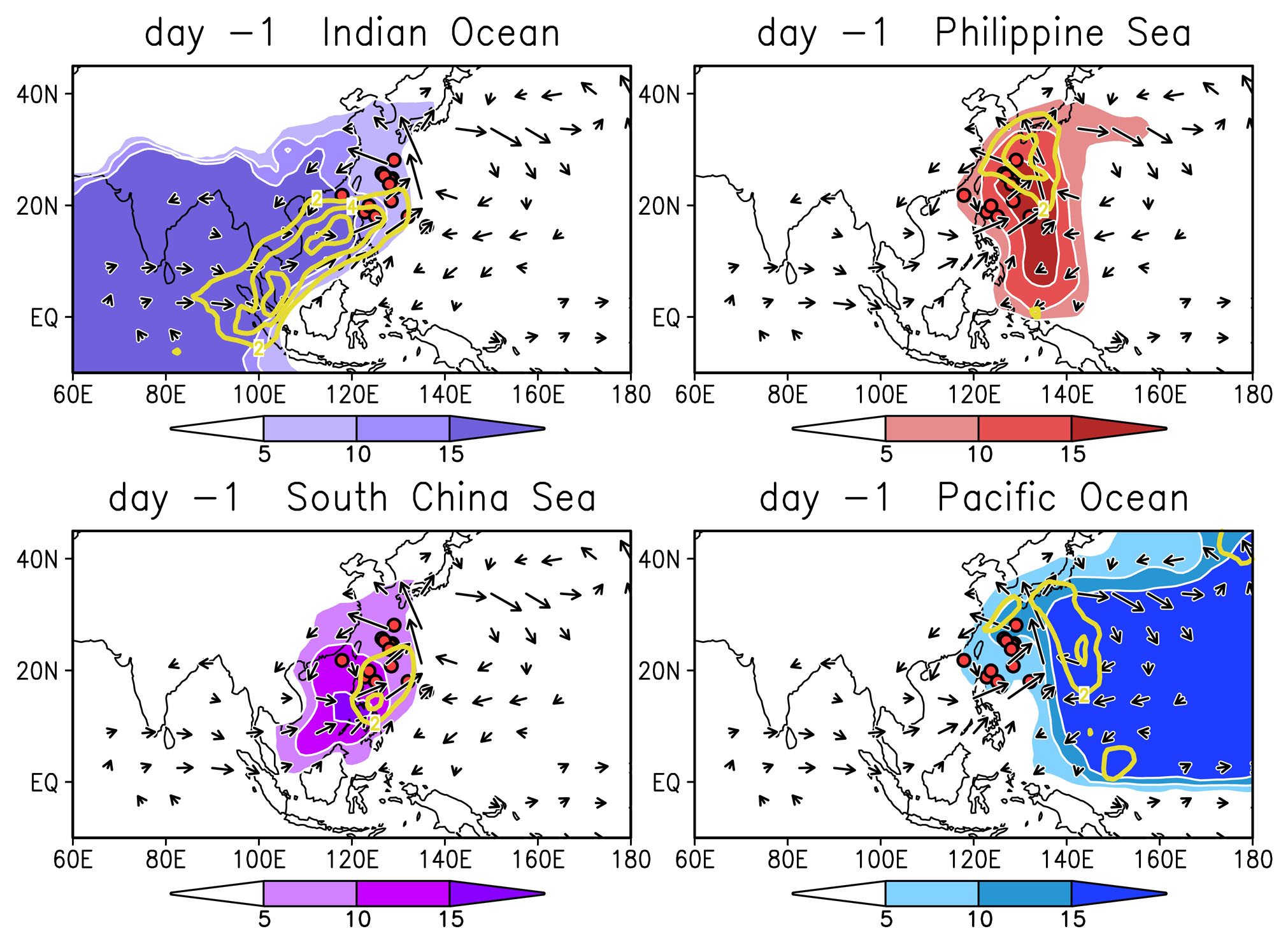Large-scale vapor transport of remotely evaporated seawater by a Rossby wave response to typhoon forcing
during the Baiu/Meiyu season as revealed by the JRA-55 reanalysis
The modulation of large-scale moisture transport from the tropics into East Asia in response to typhoon-induced heating during the mature stage of the Baiu/Meiyu season
is investigated using the Japanese reanalysis data (JRA-55), aided by a Rayleigh-type global isotope circulation model (ICM).
We highlighted the typhoons that migrate northward along the western periphery of the North Pacific subtropical high and approach the vicinity of Japan.
Anomalous anticyclonic circulations to the northeast and southeast of typhoons and cyclonic circulation to their west become evident as they migrate toward Japan,
which could be interpreted as a Rossby wave response to typhoon heating.
These resultant anomalous circulation patterns form moisture conveyor belt (MCB) stretching from the South Asian monsoon region to East Asia via the confluence region between the monsoon westerlies and central-Pacific easterlies.
The ICM results confirm that the well-defined nature of the MCB leads to penetration of the Indian Ocean, South China Sea, Philippine Sea, and Pacific Ocean water vapors into western Japan.
The typhoons have the potential to accumulate large amounts of moisture from distant tropical oceans through the interaction of their Rossby wave response with the background flow.
In the case of a typical typhoon, the total precipitable water around the typhoon center as it approaches Japan is maintained by the moisture supply from distant oceans rather than from the underlying ocean,
which indirectly leads to the occurrence of heavy rainfall over western Japan.
梅雨最盛期において熱帯から東アジアへの水蒸気輸送が台風熱源によってどのような変調がもたらされるのかについて、
長期再解析(JRA-55)並びに全球同位体循環モデル(ICM)を用いて調査した。
太平洋高気圧の西縁に沿って北上し日本へ接近する台風(いわゆる沖縄コースの台風)に特に焦点を当てた。
台風が日本へ向かうにつれて、台風の北東側及び南東側に高気圧性循環偏差、西側に低気圧循環偏差が形成されるが、
これらの循環偏差は台風熱源に対するロスビー波応答として解釈できる。結果として、南アジアモンスーン域から、
モンスーン西風と中部太平洋の偏東風の合流域を経由して東アジアに延びる、水蒸気コンベアベルト(MCB)が形成される。
ICMの結果から、MCBの形成によってインド洋、南シナ海、フィリピン海、太平洋起源の水蒸気が効率的に西日本地域へ輸送される
ことがわかった(下図参照)。
台風はそのロスビー波応答と背景場の流れとの相互作用を通して、遠く離れた熱帯海域から多量の水蒸気を集積させる
ポテンシャルをもっている。典型事例の解析から、台風が日本へ接近するにつれて、台風中心近傍の可降水量(鉛直積算水蒸気量)は
台風直下の海域からよりもむしろ遠方の海域からの水蒸気供給によって維持されていることが見出された。
そして、集積された多量の水蒸気は西日本の大雨の発生に間接的に寄与している。
*Please refer to the following manuscript.
*詳細は下記論文を参照してください。
Kudo, T., R. Kawamura, H. Hirata, K. Ichiyanagi, M. Tanoue and K. Yoshimura (2014):
Large-scale vapor transport of remotely evaporated seawater by a Rossby wave response to typhoon forcing during the Baiu/Meiyu season
as revealed by the JRA-55 reanalysis. Journal of Geophysical Research: Atmospheres, 119, doi:10.1002/2014JD021999
